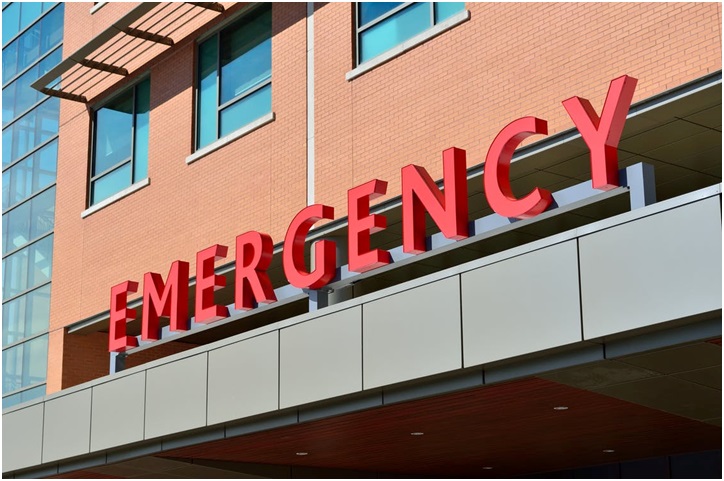7 Ways To Ensure Patient Safety In Hospitals

Whenever patients decide to visit a doctor in a healthcare facility, they trust their healthcare providers for a proper diagnosis and the facility for safe treatment.
Patients are concerned about their safety. During life-saving treatments, such as surgeries, a healthcare setup is responsible for preventing any negligence or error that may harm or injure the patient. The safety of patients is and should be one of the most important aspects of any healthcare facility.
According to a survey, almost 2.6 million people die yearly due to medical negligence and avoidable hospital errors in lower and middle-income countries worldwide.
Patient safety comprises majorly of the following areas:
- Errors related to medication
- Misdiagnosis
- Infections caused by unsafe healthcare practices
- Defects in diagnostic devices
Here are a few ways through which healthcare facilities can ensure patient safety.
-
Setup disinfection protocols
In the 1840s, a Hungarian physician, Ignaz Semmelweis, investigated why mothers were dying at an obstetrical clinic. Semmelweis suggested that ensuring strict hand disinfection procedures could significantly reduce the number of cases of puerperal fever – the most common post-labor complication. This was long before the scientific community agreed with the germ theory.
However, disinfection protocols are now considered standard operating protocols during medical treatment. Still, they can be neglected if the staff is undertrained or has no one to check and make sure. Therefore formulating strict disinfection protocols without any leniency is necessary.
-
Ensure a proper individualized treatment plan
In many healthcare setups, treatment plans are generalized for every patient regardless of their medical history or condition. Without a thorough analysis of a patient’s medical history, some treatments can do more harm than good to patients.
For example, MRI equipment that is radiation-less and safe is contraindicated in patients with activated implanted medical devices (AIMDs). The reason is overheating of implanted lead wires caused by currents created by the intense RF fields of an MRI scanner that can cause heating and permanent damage to nearby tissues.
Many patients have a history of allergic reactions to certain medications and prescribing them with such medicines without considering that it may result in dire, often fatal consequences.
-
Utilize technology
In a healthcare facility, several workers care for hundreds of patients admitted at a time. Every patient has a particular need for care and medication, which sometimes can be hard to keep in mind. Therefore utilizing healthcare monitoring devices can help assist every patient according to their need and reduce the risk of negligence.
Monitoring technology can assist nurses and physicians in ensuring that they are constantly following the correct process for a particular patient and staying on top of each patient’s demands.
By allowing doctors to communicate prescriptions to pharmacies electronically, electronic prescriptions can help eliminate prescription mistakes. Electronic health records are also being utilized to assist patients in keeping records of consultations and treatments from different doctors in one – easy-to-access place.
-
Patient Counseling and Education
Not every patient is privileged enough or comes from a background where they were exposed and educated about the importance of treatment and taking care of themselves. Many patients from underdeveloped areas think treatment is limited to only seeing a doctor and often neglect taking medicines or do not take them as prescribed. A healthcare facility should always ensure that such patients are counseled and provided with necessary education about the importance and necessity of treatment. You’re providing them the tools they need to recognize and prevent problems in their care by ensuring they understand their treatment plan, medicines, and medical procedures.
-
Evaluate staffing strategies
In a healthcare setup, it is not surprising that errors occur in staffing schedules that can result in doctors or nurses working long hours without a break. They become tired and prone to making incorrect decisions, contributing to patient negligence and malpractice. Thus, it is necessary to establish strategies to ensure nurses’ and doctors’ welfare, ensure they aren’t overworked, pay them on time, and hire new staff when necessary.
-
Ensure Care in Medicinal handling
Correct medicinal handling and storage are of equal importance when it comes to patient safety. Medicines – in the form of both edibles and injectables should be stored as per the guidelines to ensure they are safe from damaging factors that include molds, humidity, temperature, and sunlight.
Vials and bottles that are not labeled should be labeled with specific and easy-to-understand tags, so they are identifiable. Doctors should specify the proper dosage on their patients’ prescriptions. At the same time, pharmacists and nurses are responsible for distributing and providing the right drug at the correct time, including the brand, strength, and amount.
-
Ensure Proper Waste Management
Waste management is essential everywhere, regardless of the place, but there is a need for better waste management in healthcare facilities. Hospitals generate several types of waste, including used syringes, medicine bottles, blood, pus, and surgical instruments – all of which can cause contamination if not handled properly.
Label garbage cans with the type of waste they contain to ensure it is disposed of in their correct place. Provide janitors with safety gloves and equipment to mitigate risks of any accidental contamination. Ensure regular clean-up and disposal.
Conclusion
Patient safety everywhere around the world is of utmost importance. There should be no compromise on this. Healthcare facilities operating all around the globe should make sure that they take certain necessary steps and ensure protocols for patient care in a safe and secure environment.
From individualized treatment plans to patient counseling, strict sanitization protocols to waste management – every aspect should be practiced and implemented in a healthcare facility to avoid any hospital error or medical negligence.
The simple acts that employees do on the job every day can have a significant influence on patient safety in hospitals. Patients, staff, and administrators can reduce most hospital mistakes by working together. However, preparation, commitment, and hard effort are required to maintain a safe hospital environment.